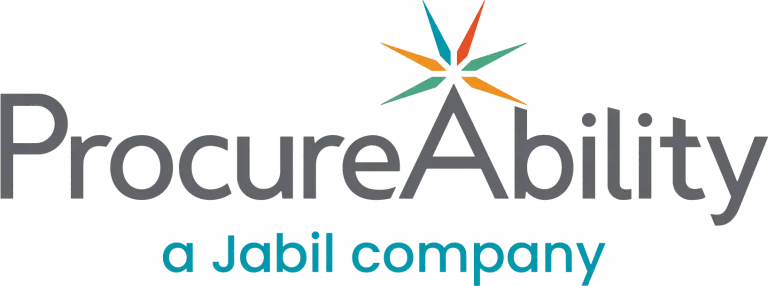The Future of AI in Procurement:
Four steps to position your organization for genuine transformation

Generative artificial intelligence (AI) is revolutionizing the nature of work across almost every industry, around the globe. We see it in creative work, where large language and image AI models generate automated content. In manufacturing, generative AI augments human-based product design efforts, optimizing key processes, and improving quality control. For example, it’s changing how healthcare is delivered, improving patient outcomes through better diagnosis and information sharing.
To better understand AI’s role in transforming the procurement landscape, ProcureAbility and our AI partner, dSilo, present our co-authored Insights series, “The Future of AI in Procurement.” In the fifth and final installment of this series, we’re sharing our thoughts on where we see generative AI taking us in the long term and the implications for the procurement function.
Current State
We’ve seen a significant evolution in the thinking around generative AI in a short amount of time. Topics business leaders now regularly debate include how quickly it will be deployed, the expected business impact, the ethical considerations, and the implications for humans and society at large. But few companies report experiencing a bottom-line boost from AI: a recent study found that only 15 percent of respondents were seeing a meaningful impact of Gen AI on their company’s earnings before interest and taxes.¹
As business leaders gain more experience with AI, they’re becoming more realistic and less susceptible to hype. This is not unlike major technological breakthroughs of the past: there’s an inevitable adoption curve that takes time to build awareness of technology’s potential, evaluate different approaches, and start to experiment with select opportunities. This process ultimately leads them to make more informed decisions about where to commit meaningful investment for practical applications.
If history is any precedent, then the adoption curve generative AI should follow is a similar path, albeit on an accelerated timeframe. As you think about your own company’s journey toward leveraging generative AI in procurement, we believe it’s important to keep four rules of thumb in mind as you proceed into the future, so as not to stray too far afield and ensure gen AI is a genuine value-add for your organization:
1. Use Generative AI where it’s differentiated
As you look to develop use cases for deploying gen AI, consider where the technology has capabilities that are differentiated from what we humans can do best. For example, gen AI insights are based on what’s happened in the past, so the technology can recognize patterns and flag insights as it looks at new data sets. At least at this point, humans are still better at dealing with new issues or exceptions that draw on a wider range of experiences than large language models have been trained in. Combining the strengths of humans and gen AI engines will get the best out of all your resources.
2. Transform from the bottom up
Most of our current focus for experimentation with gen AI is on taking specific well-defined tasks and automating them. That’s because this is an area where organizations are immediately able to evaluate technology options and implement practical applications. It’s also a lot more manageable – organizations can address each discrete task in an overall workflow and automate work task by task. This approach also fits well within an agile deployment model where each problem is broken down into small steps that can be solved in turn. Working from the bottom up and stringing together a slew of successes also helps teams build their Gen AI literacy through learning by doing, which can help reduce implementation risks down the road.
3. Build a vision from on high
As you automate and transform tasks, consider the bigger picture. Ask yourself: “What could the future look like?” Sometimes, top-down assessments reveal a different path.
Instead of just improving existing processes, you may need to reengineer them completely. Keep your focus on the ultimate outcomes. For example, rather than using generative AI to compile category reports from multiple sources, you might apply AI to structure and execute direct negotiations with key suppliers, clearly defining goals for price, service, and other outcomes.
The key question: How can we fully automate commerce? Imagine legacy contracts becoming smart contracts, with all transactional information extracted and embedded into P2P systems.
4. Keep the data clean
Generative AI runs on data—it’s its oxygen and fuel. However, much of the data we work with isn’t clean. Metadata may be missing, supplier or lead time updates may fail, and legacy data often doesn’t transfer during system upgrades.
Therefore, using AI to clean data and fix gaps is a critical first step. Although this is a long-term effort, it lays the foundation for automating commerce. For example, AI can routinely request updated lead times from suppliers and push responses directly into the P2P system. It’s never too early to start improving data integrity.
Keep perspective. We’ve spent decades evolving how we use the internet for business, and even SaaS took time to gain traction. These experiences help us make smarter decisions as we now stand ready to leverage generative AI for maximum impact.
Looking ahead
Humans should remain at the heart of procurement to achieve genuine transformation. Even with generative AI, people are still essential for managing new requirements and handling exceptions.
Therefore, focus your AI roadmap on tasks that make your team more effective and efficient. For example:
-
Automate transactional execution while staying compliant, guiding stakeholders to the best suppliers, and streamlining requisitioning, ordering, receiving, and payment.
-
Support category strategy by preparing data and drafting RFPs.
-
Perform initial contract redlining to aid Legal reviews.
By doing this, humans can focus on strategic work, driving greater value across the organization.
In this Insights series, we explored how generative AI is reshaping procurement. Specifically, we showed how ProcureAbility and dSilo help clients use this game-changing technology to unlock new capabilities.
This is a rare opportunity. Procurement leaders can now dramatically increase their impact on organizational success. However, even though generative AI has been a hot topic, we are still in the early stages of a long journey.
Therefore, it’s essential to take that first step. Experiment, learn, and adapt as you go. Additionally, a third-party service provider can accelerate your progress, helping your procurement organization drive growth, create value, and contribute strategically to the business’s bottom line.



